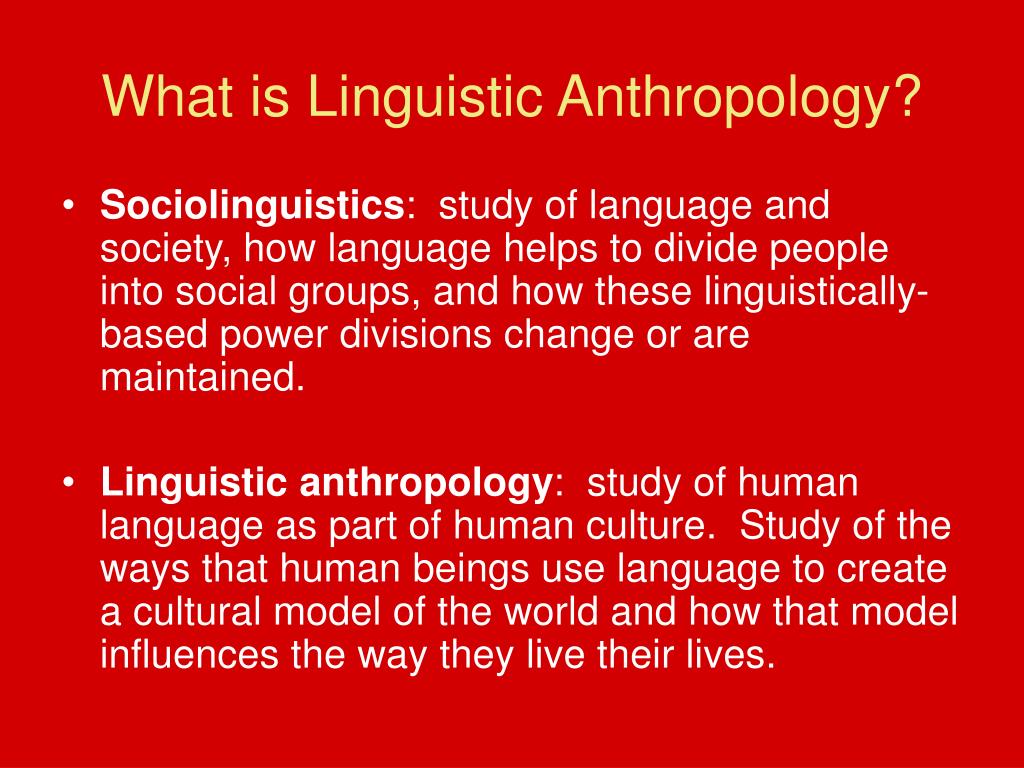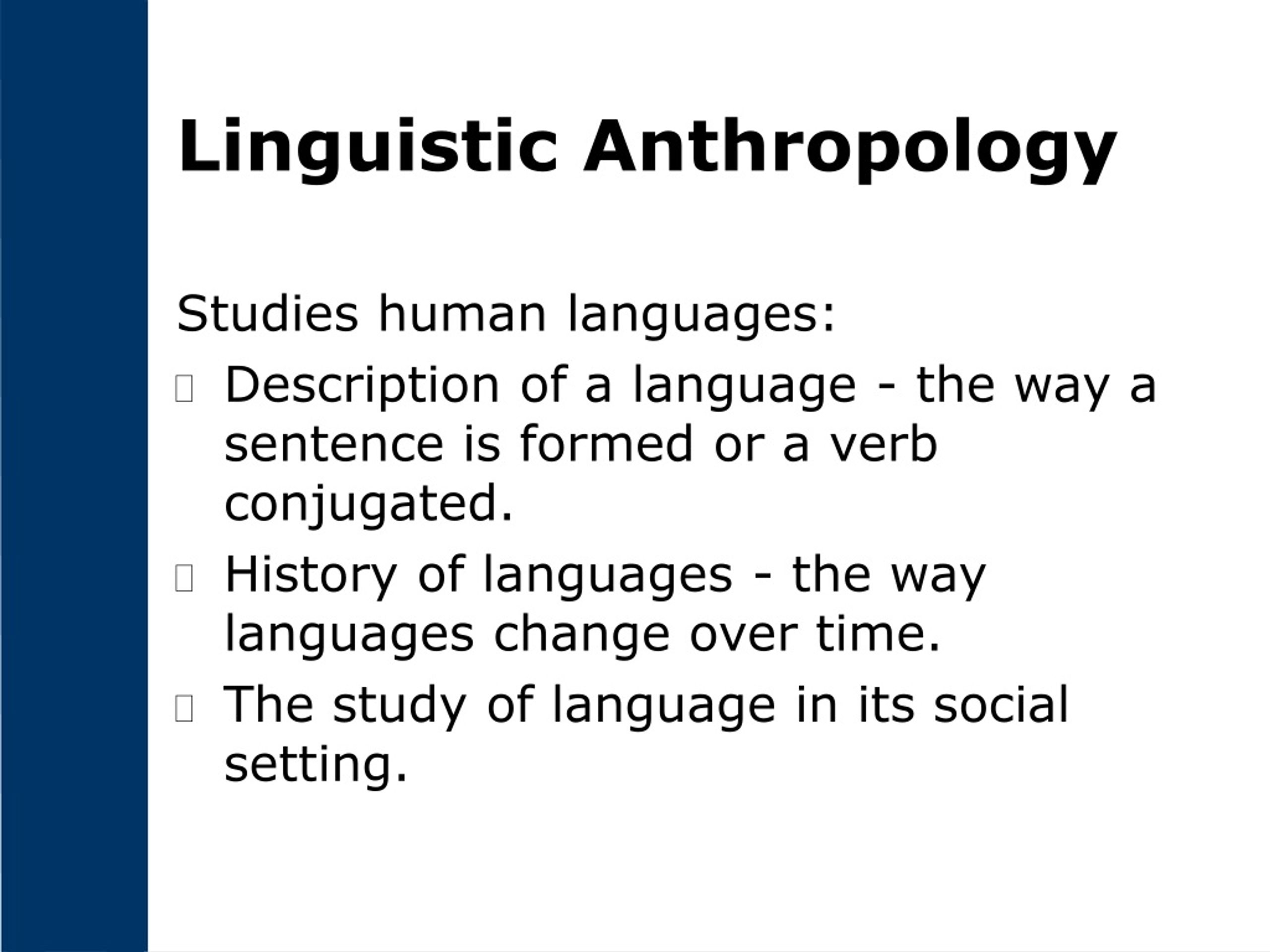

They suspend their sense of what is expected in their own culture in order to understand other perspectives without judging them ( cultural relativism). Cultural AnthropologyĬultural anthropologists focus on similarities and differences among living persons and societies. Credit: Subdisciplines of anthropology (Figure 1.8) original to Explorations: An Open Invitation to Biological Anthropology by Mary Nelson is under a CC BY-NC 4.0 License. Figure 1.2: The discipline of anthropology has four subdisciplines: archaeology, cultural anthropology, biological anthropology, and linguistic anthropology, as well as an applied dimension. Findings from all subdisciplines, together, contribute to a multifaceted appreciation of human biocultural experiences, past and present. Others (like cultural anthropology) use humanistic and interpretive approaches to understand human beliefs, languages, behaviors, cultures, and societies. Some (like biological anthropology) use the scientific method to develop theories about human origins, evolution, material remains, or behaviors. Each of the subdisciplines provides a distinct perspective on the human experience. In addition, applied anthropology is sometimes called the fifth subdiscipline (Figure 1.2). In the United States, the discipline of anthropology includes four subdisciplines: cultural anthropology, biological anthropology, archaeology, and linguistic anthropology. However, anthropology is a uniquely dynamic, multifaceted discipline that emerged from a deep-seated curiosity about who we are as a species.

Anthropologists are not the only scholars to focus on the human condition biologists, sociologists, psychologists, and others also examine human nature and societies. Derived from Greek, the word – anthropos means “human” and – logy refers to the “study of.” Therefore, anthropology is, by definition, the study of humans. Credit: Humans (Figure 1.1) original to Explorations: An Open Invitation to Biological Anthropology is a collective work under a CC BY-NC-SA 4.0 License.Īnthropology is a discipline that explores human differences and similarities by investigating our biological and cultural complexity, past and present. What makes people, around the world, look, speak, and behave differently from one another? And what do all humans share in common? Figure 1.1: Despite superficial differences among individuals, humans are 99.9% genetically similar to one another. Some people are barely five feet tall while others stoop to fit through a standard door frame.

Human beings speak more than 6,000 distinct languages. Why are people so diverse (Figure 1.1)? Some people live in the frigid Arctic tundra, others in the arid deserts of sub-Saharan Africa, and still others in the dense forests of Papua New Guinea. All anthropological subdisciplines seek to better understand what it means to be human. Biological anthropology is one of four subdisciplines within anthropology the others are cultural anthropology, archaeology, and linguistic anthropology. With each new discovery-whether it is a skeleton in North America, fossil footprints in Tanzania, or a mandible with teeth in China-we come another step closer to understanding the evolution of our species.īiological anthropologists study when and how human beings evolved their intriguing findings are the focus of this book. In underwater caves along Mexico’s Yucatan Peninsula, archaeologists have found eight well-preserved skeletons dated between 9,000 to 13,000 years old. Although it is rare to find an ancient, nearly complete skeleton in the ocean depths, Eve is not the only such find. Who was Eve? What was her life like? How did she end up in the cave? What can we learn about her from the bones she left behind? Anthropologists have determined that Eve was 4.6 feet tall, had a broken back, and died in her early 20s. Eventually they were able to reconstruct an 80% complete human skeleton that they named “Eve of Naharon.” Dated to 13,600 years ago, she is (as of today) the oldest known North American skeleton (TANN 2018). The divers ended up recovering not just one but many bones from the site. However, in the distant past, these caves were dry land formations high above the ocean. As they swam closer, they suspected it could be a bone-and likely a very ancient one, as this cave system is inaccessible today without modern diving equipment. Differentiate science from other ways of knowing.ĭiving in caves along the Caribbean coast of Mexico, archaeologist Octavio del Rio and his team spotted something unusual in the sand 26 feet below the ocean surface.Differentiate between hypotheses, theories, and laws.Explain key components of the scientific method.Define biological anthropology, describe its key questions, and identify major subfields.Explain the main anthropological approaches.Describe anthropology and the four subdisciplines.


 0 kommentar(er)
0 kommentar(er)
